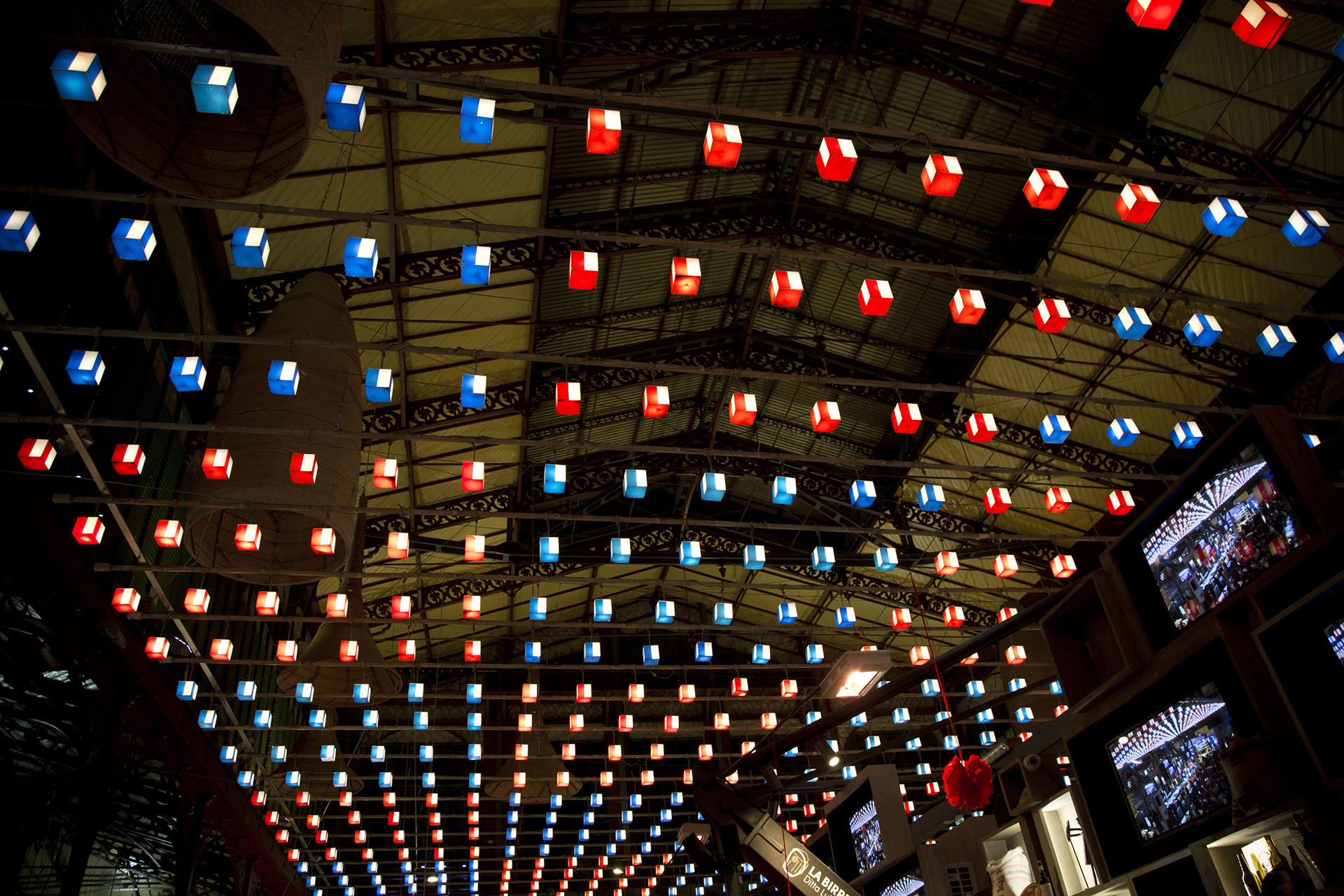Flying Carpet
from december 7, 2014
to april 1, 2015
to april 1, 2015
at the Mercato
Centrale Firenze
Centrale Firenze
by Buren

PROJECT ARTE MERCATO
“The market is a place of exchange par excellence and our Mercato is a piazza that encourages a virtuous blend of intellectual activities and people with “good taste”. The market is thus the perfect host for art and rapports, knowledge and food; it’s the epicentre of a myriad of interests. These are some of the Mercato Centrale Firenze’s strengths, a key source of its charm and demonstrated by the millions of visitors we’ve welcomed since opening seven months ago. This success is tied to the local community, so we feel that we must give back, a duty that, in my opinion, should be shared by every company. Bringing Daniel Buren’s Flying Carpet to Florence is the first act of giving back that the Mercato Centrale Firenze wants to offer its city, while wishing everyone a most wonderful Christmas.”
Umberto Montano, President MERCATO CENTRALE FIRENZE
“The market is a place of exchange par excellence and our Mercato is a piazza that encourages a virtuous blend of intellectual activities and people with “good taste”. The market is thus the perfect host for art and rapports, knowledge and food; it’s the epicentre of a myriad of interests. These are some of the Mercato Centrale Firenze’s strengths, a key source of its charm and demonstrated by the millions of visitors we’ve welcomed since opening seven months ago. This success is tied to the local community, so we feel that we must give back, a duty that, in my opinion, should be shared by every company. Bringing Daniel Buren’s Flying Carpet to Florence is the first act of giving back that the Mercato Centrale Firenze wants to offer its city, while wishing everyone a most wonderful Christmas.”
Umberto Montano, President MERCATO CENTRALE FIRENZE
he Mercato Centrale Firenze presents
FLYING CARPET by BUREN
Stay rods 3 mm in diameter and 200 cm apart are suspended from the steel ropes; the rods vary in length so as to account for the curve of the ropes, guaranteeing perfect alignment of the electrical ducts supporting and lighting the single cubes. The ducts are connected to each other in order to ensure they are parallel with the 6 aluminium extrusions 40 x 30 mm in size that run longitudinally to the entire length of the work. The lamps are divided into 4 x 6 groups, determined according to their colour and comprising 24 cubes. There are 7 transversal groups and 8 longitudinal, for a total of 56. The transversal space between the lamps is 70 cm, while the longitudinal distance is 114 cm. Every cube is equipped with a small steel cable that directly connects it to the load-bearing duct, providing an extra safety measure to protect against the risk of the work falling. A key factor in the work’s success is the perfect alignment of the electrical ducts and, as a result, the perfect equidistance between the individual cubes and the uniform rotation of the cubes, whose adjacent sides must be perfectly parallel. Looking at the work diagonally bluntly reveals every defect of this alignment, stripping the work of its magic, just as Daniel Buren wanted.
